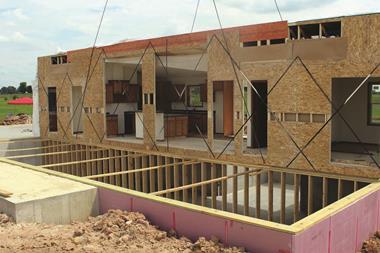Some 79% of commercial landlords say they plan to launch a flexible office offering in the next year, according to a recent CBRE study. With the co-working sector enjoying a 10% growth spurt in recent months, traditional landlords are playing catch-up. So how can they enter the co-working market?

A staggering one fifth of all London commercial property deals in 2017 went to flexible office space providers and at the start of 2018 WeWork became central London’s biggest office space occupier. But it isn’t just a London phenomenon – recent research shows that uptake of shared workspaces also tripled in the UK’s largest regional cities.
As we look to 2019, 95% of UK landlords see flexible office space as being on the brink of becoming mainstream, the CBRE study found.
UK landlords have a number of choices when it comes to opening a flexible co-working space. Firstly, they can build their own; CBRE’s research shows that 38% of landlords are considering doing this. The DIY route, while challenging, is appealing, especially if you agree that co-working is driving a permanent market change.
Or there is the slightly less risky sole occupancy model; according to CBRE, 30% of landlords are considering letting their space to an existing co-working operator. However, this approach still leaves landlords vulnerable to the cyclical boom-and-bust nature of the property sector.
But what about a third way – one that allows landlords to meet market demand while returning solid long-term gains?
One answer lies in the hotel industry, where operator-esque models have long been used to mitigate against recessions. A similar version of this ‘operator model’ can be applied to co-working, just as property firms manage hotels through joint ventures with operator brands such as IHG and Hilton – providing prime space, outsourcing operations and management and splitting the income.

The co-working operator can use its brand and expertise to attract members to fill the space, run the community and manage the building, splitting the revenue with the landlord.
This less risky model works for both landlord and operator, enabling them to share in the considerable upside created by changes to the property market, while also shielding them against typical boom-and-bust cycles.
Under a conventional leasing arrangement, co-working tenants may struggle to pay the rent in a recession, when the price they can charge per desk falls. If they fold, the landlord is stuck with an empty building. With the operator model, the co-working operator still has to lower its prices in a recession, but the landlord shares the downside; in other words, they go down together. But in the boom times, the landlord shares the considerable upside, rather than seeing the operator take it all.
The operator model may hold the key to the next generation of office space provision. The property arbitrage that has characterised the rise of co-working has been as much an arbitrage of landlords’ sluggish response to a structural shift in demand as it has been an arbitrage of property, with young operators being quicker than landlords to cash in on a seismic change in occupiers’ needs and attitudes. But the head start operators have over landlords isn’t the end of the story.
In the long run, operators with a leasing business model who are capitalising on the co-working trend may come crashing down in a recession, while landlords with no experience of marketing to a new generation of customers may struggle to get their wheels off the ground in good times and bad. But with the operator model, a new synthesis might well emerge that allows both operator and landlord to profit and truly take off.
































No comments yet